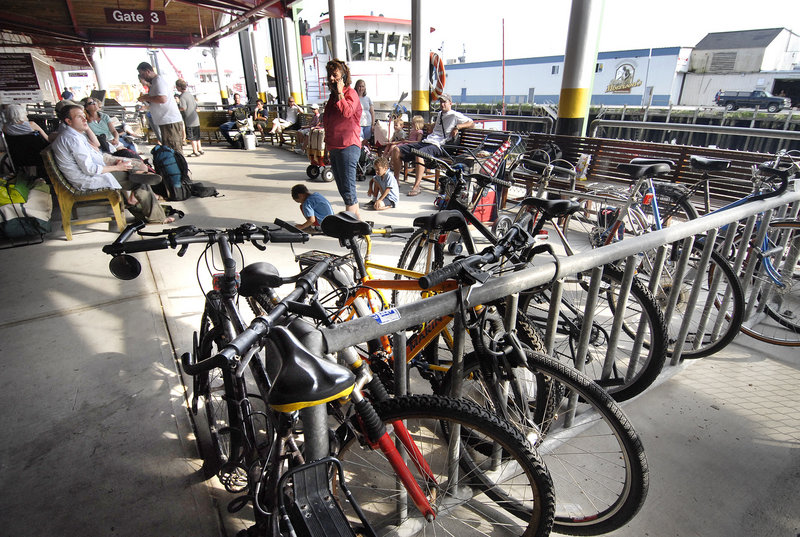One of the truisms of U.S. transportation planning has long been that each year, there will be more cars on the road. The logic of this is simple — as the population grows so does its need to get to places, and motor vehicles are by far the most popular choice.
This has been the case for decades. But not the past decade. Even before the economic recession put millions of people out of work or the recent spike in gasoline prices, the growth in the amount of driving per capita (also known as vehicle miles traveled) had peaked and is now in decline.
People are simply driving less than they used to.
And it’s a trend that is being led almost entirely by young people. As a newly released report documents, the average 16- to 34-year-old American is driving 23 percent fewer miles than the average young person drove in 2001.
Yet, over that same period, the number of miles traveled on public transit by people of the same age range has increased 40 percent.
Today’s young people are far more inclined to walk and travel by bike as well, up 16 percent and 24 percent, respectively, according to the report by the Frontier Group and the U.S. Public Interest Research Group Education Fund.
They are even deciding not to get a driver’s license (26 percent of 16-to-34-year-olds don’t have one, compared with 21 percent a decade ago).
TRANSCENDING THE COST
There are any number of reasons for this. Obviously, a desire to economize is one. But the trend clearly transcends mere cost.
According to a National Association for Realtors study, the younger generation prefers to live closer to shopping, schools, public transit and other conveniences than their older peers.
They also want to have less adverse impact on the environment, as nearly twice as many young people agreed with the statement, “I want to protect the environment, so I drive less,” then did older Americans, according to a survey by KRC Zipcar.
Yet this monumental shift in attitudes seems to be getting lost on many in Congress and on their counterparts in state capitals where the preference for spending tax dollars on highway construction rather than sidewalks, bike lanes and public transit remains high.
Congress, of course, has been completely stumped by transportation policy in recent years. Last month, the House and Senate agreed on a three-month extension of the federal highway program. It was the ninth such short-term continuance since the program expired in 2009, and political brinkmanship over oil industry subsidies, the Keystone XL pipeline and other extraneous matters overwhelmed what used to be a fairly straightforward process.
House Republicans have frequently targeted funding for Amtrak and President Barack Obama’s high-speed rail program for elimination as well.
But it’s not just trains they don’t like. They’ve also expressed interest in wiping out all mass transit funding from the federal Highway Trust Fund, buses and subway systems included.
Democrats have generally rallied in defense of public transit spending in Congress, but it’s not clear whether they are willing to go far enough to reshape transportation policy.
In Annapolis, for instance, lawmakers have shown a reluctance to put regulatory teeth into “smart growth” strategies that would discourage sprawl in favor of higher-density urban growth.
WILL PAST ERRORS RECUR?
The danger is that transportation policy will continue to be shaped by elected officials who only look backward and repeat the mistakes of the past. As gasoline prices continue to rise — and most analysts believe they will — it will no longer be just young people who demand transportation alternatives, but older Americans as well.
Naturally, some naysayers will object to any change in policy as unaffordable in the current economic circumstance.
But the reality is that the U.S. can’t afford to continue to act shortsightedly and continue to shovel tax dollars into expanding highways at the expense of its urban centers. That’s a prescription for economic stagnation and decline.
What’s needed is a better setting of priorities, one that promotes alternative methods of transportation through government spending and land-use policies. This is a change that would yield tremendous dividends, from a cleaner environment to a healthier population — and a U.S. that is less dependent on foreign oil.
Does anyone have a vision to match that of the younger generation? We haven’t heard much from the presidential candidates on the subject.
Still, if the drive-less trend continues, policymakers will be forced to take action: The gasoline tax revenue won’t be there to keep building, and rebuilding, roads. The nation’s course will eventually have to be corrected.
– McClatchy/Tribune News Service
Send questions/comments to the editors.



Success. Please wait for the page to reload. If the page does not reload within 5 seconds, please refresh the page.
Enter your email and password to access comments.
Hi, to comment on stories you must . This profile is in addition to your subscription and website login.
Already have a commenting profile? .
Invalid username/password.
Please check your email to confirm and complete your registration.
Only subscribers are eligible to post comments. Please subscribe or login first for digital access. Here’s why.
Use the form below to reset your password. When you've submitted your account email, we will send an email with a reset code.